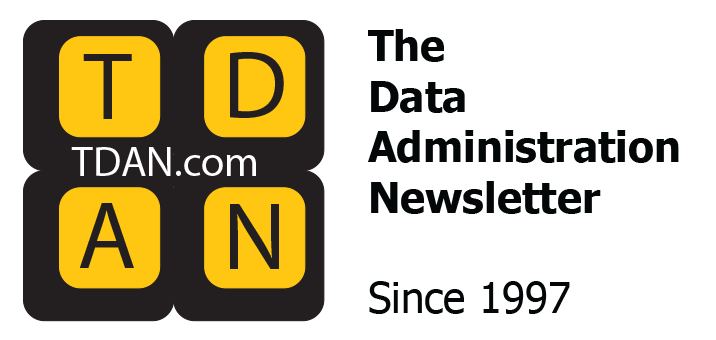
Data governance has long been the backbone of responsible data management, ensuring that organizations maintain high standards in data quality, security, and compliance. According to Jonathan Reichental in “Data Governance for Dummies,” the scope of governance extends well beyond data ownership and stewardship. It encompasses metadata, data architecture, master and reference data management, storage, integration, privacy, security, modeling, quality, and business intelligence. This viewpoint ensures that the foundational elements of data infrastructure are robust and well-aligned with business needs.
McKinsey’s authors of “Rewired” build on this foundation by emphasizing data reusability and compliance with risk and regulatory requirements. They push governance further, stressing its role in enabling the speed and scale of data delivery. To them, governance isn’t just a safeguard; it’s an enabler. It must enforce clear definitions, monitor data quality, and ensure data flows freely and securely through the organization. The aim is not only to mitigate risk, but also to build digital trust — a crucial currency in today’s data-driven world.
But as organizations move into the AI era, the above governance frameworks may no longer be adequate. With AI reshaping how data is stored, processed, and interpreted, new risks emerge: algorithmic bias, opaque decision-making, and flawed insights leading to misguided business actions.
In their latest work, “All Hands on Tech,” Tom Davenport and Ian Barkin’s chapter on this topic is entitled simply “Governance,” though they also include related chapters on “Genesis,” “Guardrails,” and “Guidance.” Davenport and Barkin urge leaders to think about governance — spanning processes, workflows, model behavior, and the ethical dimensions of technology. I asked Davenport about this, and he said, “Traditional data governance is too narrow and unappealing, often focused on policies and procedures that are rarely followed and lack enforcement. Instead, data practitioners need to shift the focus towards data enablement or data success, as seen at Intuit with their data success managers. The idea is to prioritize making it easy for employees to do the right thing with data, using a more positive and empowering approach rather than a rigid, top-down governance model.”
This view recognizes that governance must now operate across the full lifecycle of data use, including how insights are consumed and acted upon. It must account for unintended consequences like discrimination and misinformation and align closely with organizational ethics and values. In this sense, governance becomes not just a control mechanism, but a strategic imperative — one that ensures AI is used responsibly, transparently, and effectively. As we redefine digital trust for the AI age, governance itself must be rewired to meet the moment.
Governance Facilitates Data Application Maturity
Despite the growing importance of data in modern enterprises, only a minority of organizations — just 39% — report having an established data governance organization, according to our recent research. This leaves a majority, 61%, without a formal governance structure, creating challenges for managing data effectively. The absence of such a foundation often leads to poor data quality, weakened security, and eroded trust — issues that ultimately undermine data-driven decision-making and business performance.
The good news is the research says data governance is gaining awareness. A decade ago, it ranked as the 17th priority among data leaders; today, it has climbed to number 10. This rise in priority signals recognition that governance is not just a bureaucratic function, but a strategic enabler of analytics, artificial intelligence, and digital transformation. A formal governance organization is a critical building block — it brings structure, accountability, and cross-functional coordination to efforts around data quality, stewardship, privacy, and compliance.
The link between governance and business intelligence success is particularly striking. Among organizations that report completely successful BI initiatives, 46% have established governance organizations. These high-performing data driven organizations are far more likely to make data-driven decisions consistently — 58% report doing so all the time, compared to just 44% of those with only somewhat successful BI. When combining those who make data-driven decisions all or most of the time, the rates jump to 92 and 87%, respectively, for the most and moderately successful BI adopters.
Trust is another hallmark of BI success. Among organizations with fully successful BI initiatives, 92% report high maturity in data governance and trust. These findings underscore that data governance is not merely a support function, but a core differentiator. While reporting structures vary — 32% of governance functions report to a chief data officer (CDO) and 29% to IT — what matters most is the presence of a dedicated governance function that has executive visibility and the authority to drive enterprise-wide change.
In sum, organizations that invest in formal data governance are not just improving data quality and compliance, but they are positioning themselves to make better, faster decisions and to derive more consistent value from their data assets. As the stakes for data-driven performance grow, so must the commitment to structured, strategic data governance.
Evolving Role for Governance
Smart organizations are beginning to evolve their approach from traditional data governance to what can be more accurately described as business-focused data governance. This shift reflects the growing complexity and scope of today’s data and analytics landscape. Emerging technologies like machine learning (ML), artificial intelligence (AI), generative AI, and agentic AI are pushing organizations to govern not just raw data, but also analytic content, outputs, and the models that produce them. In this new environment, governance must be extended to analytical interpretations, derivative reports, visualizations, models, training data, and the metadata that defines and supports them. to analytical interpretations, derivative reports, visualizations, models, training data, and the metadata that defines and supports them.
Organizations that report the greatest success with business intelligence are already further along in this journey. These leaders demonstrate a higher maturity in trust and governance, which underscores the importance of aligning governance efforts with real business outcomes. Success now demands evolution in why governance is pursued (to deliver business value), what is governed (data and analytic content), and how it is governed (through coordinated structural and technological processes). As Michael Moran, Research Vice President for Dresner Advisory Services notes, the foundational questions have shifted to: “What needs to be governed?” “To what degree?” and “How best to govern?”
The practical reality is that organizations must understand and navigate the nuanced overlaps among data management, data security, and governance. For instance, activities traditionally associated with security and cataloging — such as controlled access to data (77%), documentation of data objects (72%), and metadata capture (68%) — are considered critical or very important. However, when it comes to managing analytics-specific elements like life cycle management of AI models and active stewardship of data and analytic content, perceived importance drops to 46 and 61%, respectively. This gap highlights the lag in governance practices catching up to business requirements.
True business-focused governance expands beyond static definitions. It requires lifecycle management that includes data lineage, model impact analysis, and the preservation of analytic content over time. Governance must now apply proportionally and deliberately — whether at the departmental, geographic, or enterprise level — depending on business value and risk. The goal should not merely control, but service business and mission-critical processes. By deriving governance priorities directly from business value chains and supporting workflows, organizations can make proactive, cost-effective decisions about what to govern, how, and to what extent — ensuring that data and analytics serve as durable, trustworthy assets in the age of AI.
Parting Words
The age of AI demands a profound shift in how organizations think about governance. Traditional data governance — focused on data quality, security, and compliance — is no longer sufficient. As data becomes the raw material for increasingly complex and consequential algorithms, governance must expand to include the full ecosystem of data and analytic content: models, metadata, outputs, and the processes by which insights are consumed and acted upon.
This evolution is strategic. Organizations that are succeeding with analytics and BI are already showing what’s possible when trust, transparency, and business alignment are embedded into governance. They treat governance not as a box-checking exercise, but as a value-enabling discipline that supports digital decision-making at scale. To remain competitive and responsible in this new era, organizations must embrace business-focused governance. That means managing risk, ensuring fairness and accountability in AI, and aligning governance with mission-critical outcomes. Ultimately, governance in the AI era is not just about protecting data — it’s about enabling the future.
